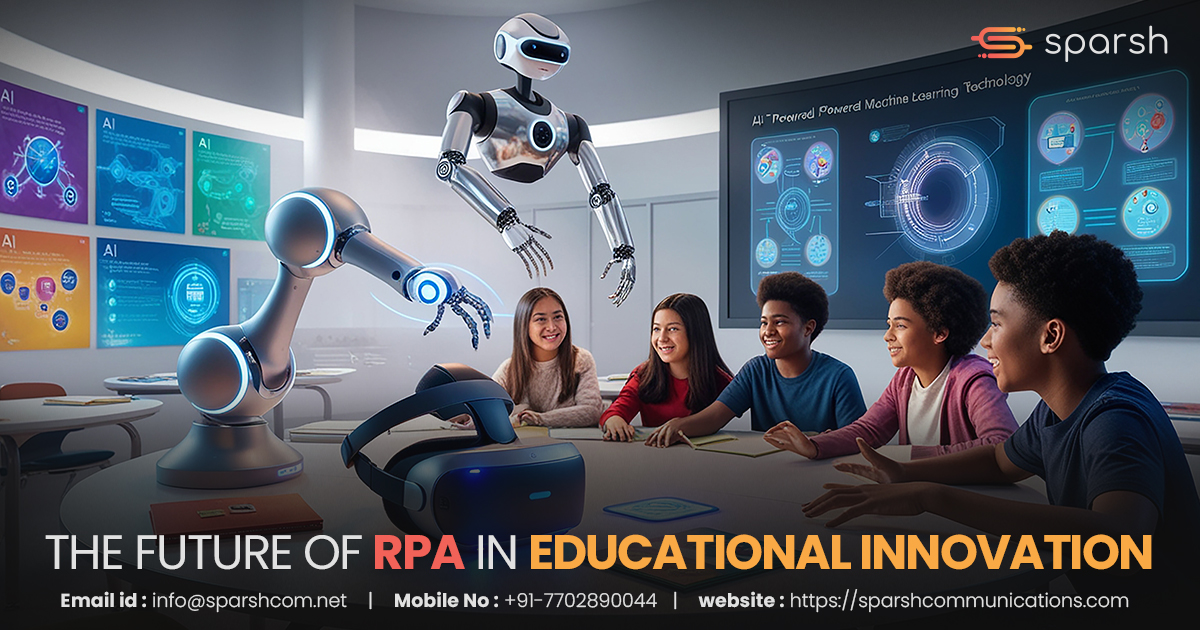The Future of RPA in Educational Innovation

1. Introduction
In the evolving landscape of education, Robotic Process Automation is emerging as a transformative force. This technology automates routine and repetitive tasks, allowing educational institutions to focus more on student engagement and personalized learning. As it continues to mature, its impact on the educational sector promises to be substantial, enhancing both administrative functions and educational delivery.
2. The Role of RPA in Education
RPA in education primarily serves to increase efficiency and reduce the burden of administrative tasks. By automating processes such as student admissions, attendance recording, grade management, and even financial operations, it frees up educators and administrative staff to dedicate more time to student-focused activities.
3. How it is Transforming the Education Industry
RPA is revolutionizing the education industry by streamlining administrative operations and facilitating data management. For example, it can automate the processing of student applications and inquiries, manage scheduling, and handle HR and payroll tasks. This automation not only speeds up processes but also reduces the likelihood of human error, ensuring accuracy and consistency in data handling.
4. Key Benefits of RPA in Education
The adoption of RPA in education brings several benefits:
- Efficiency Improvements: Automation speeds up time-consuming administrative tasks, leading to faster response times and smoother operations.
- Cost Reduction: By reducing the workload on staff, it helps lower operational costs associated with manual processing.
- Accuracy: Automated processes minimize errors in data entry and management, enhancing the reliability of educational administration.
- Scalability: Its systems can easily scale to handle increased workloads, such as during enrollment periods, without additional human resource investment.
5. What are the limitations of it in education?
While it offers numerous advantages, it also comes with limitations:
- Complexity in Setup: Implementing RPA solutions can be complex, requiring significant upfront investment in setup and configuration.
- Limited Decision Making: It is primarily rule-based and lacks the ability to perform tasks that require human judgment and decision-making.
- Maintenance Requirements: It systems require ongoing maintenance to adapt to changing educational policies and procedures.
6. Use Cases of RPA in the Education Sector
Several practical applications of RPA in education highlight its utility:
- Admissions Processing: Automating the collection, processing, and review of student applications.
- Attendance and Grade Management: Streamlining the recording of attendance and the calculation of grades.
- Resource Allocation: Automating the management of classroom resources and schedules.
- Compliance and Reporting: Ensuring compliance with educational standards and generating required reports automatically.
7. The Future of RPA in Education
Looking forward, RPA is set to play an increasingly integral role in education. Integration with AI could lead to more advanced applications, such as predictive analytics for student performance and customized learning plans. As educational institutions become more data-driven, RPA will be crucial in managing and interpreting vast amounts of data to enhance educational outcomes.
8. Why Choose Sparsh for Your RPA Adventure?
Choosing Sparsh Communications for RPA implementation in education ensures that you partner with a leader in innovative automation solutions. Sparsh offers tailor-made RPA strategies that align with educational goals, supported by a team of experts dedicated to optimizing and transforming educational processes through automation. Whether streamlining operations or enhancing educational delivery, Sparsh is equipped to support your institution through every step of the its journey.









